David Rieder, North Carolina State University
(Published November 22, 2016)
~~~~~~ Making Wayves ~~~~~~~~~~~~~~~~~~~~~~~~~~~~~~~~~~~~~~~~~~~~~~~
~~~~~~~~~~~~~~~~~~~~~~~~~~~~~~~~~~~~~~~~~~~~~~~~~~~~~~~~~~~~~~~~~~~
~~~~~~~~~~~~~~~~~~~~~~~~~~~~~~~~~~~~~~~~~~~~~~~~~~~~~~~~~~~~~~~~~~~
~~~~~~~~~~~~~~~~~~~~~~~~~~~~~~~~~~~~~~~~~~~~~~~~~~~~~~~~~~~~~~~~~~~
~~~~~~~~~~~~~~~~~~~~~~~~~~~~~~~~~~~~~~~~~~~~~~~~~~~~~~~~~~~~~~~~~~~
~~~~~~~~~~~~~~~~~~~~~~~~~~~~~~~~~~~~~~~~~~~~~~~~~~~~~~~~~~~~~~~~~~~
~~~~~~~~~~~~~~~~~~~~~~~~~~~~~~~~~~~~~~~~~~~~~~~~~~~~~~~~~~~~~~~~~~~
~~~~~~~~~~~~~~~~~~~~~~~~~~~~~~~~~~~~~~ Transductive Rhet~Writing ~~~~~~
A Third Wayve Forward, or Forget the PC
In 2003, in this journal, Victor J. Vitanza published an essay in response to a question posed by the editors of special issue 5.1, “Rhetoric/Composition: Intersections/Impasses/Differends.” Lisa L. Coleman and Lorien Goodman’s asked, "What is the place of rhetoric in composition today?" Considering how loaded that question has been for scholars associated with a field that, depending on our training and institutional investments, is known affectionately as "Rhet/Comp" or "Comp/Rhet," Vitanza’s response was an important move away from the status quo. Rather than answer the editors' question, Vitanza responded with one of his own: "What is it that writing wants?" (2). For Vitanza, a more expansive view of writing (and rhetoric) is marginalized by the ongoing debates about where rhetoric ends and writing begins—in other words, where we should place the punctuational slash mark. So, rather than play into another round of hostage negotiations, Vitanza answered his own question with what he called a third "wayve" forward
Perhapless, there are two possibilities here: "We" can start teaching writing precisely as the university needs it taught, or "we" can attempt "to teach" writing the way "we" want. But there are, let us not forget, third (interval) wayves. And therefore, "we" should ask: What is it that writing wants? I suspect that "writing" does not want what either the uni-versity thinks it needs nor what "we" think we want.
The two sides in the well-known debate between Bartholomae and Elbow are hard to ignore. Bartholomae advocates writing for the university; Elbow advocates for the individual writer. For Vitanza, these two positions are a "hapless" problem because a more expansive approach to what writing can be has been overlooked. Sometimes, it takes a "bye"-stander or "third party" to ask the obvious question: 'why don't you just ask writing what it wants?,' which is a position that Vitanza had realized in his scholarly work on another subject, the sophists. In the following excerpt, he offers an admission of how he realized the futility of taking a reclamatory approach to history and its consequences, and what happens when we do:
I used to think that the Sophists (sophistic rhetorics) had to be reclaimed "in" the history of rhetoric, or histories of rhetorics, when it became ever so unclearly to me, as Stanley Rosen insists, that the more third sophistic "writing" is suppressed, the stronger and the more a stealthy-rhetoric it becomes (Plato’s Sophist 321-22). The more that anything or "it" becomes suppressed (or repressed or oppressed) the more "it" eternally returns to have, as some would say, its revenge. (Think of the revenge of the crystal, or the object!) It’s, however, non-reactionary re-venge, since nonhuman" (Vitanza n. pag.).
The more we slash away a position, the stronger it returns, albeit not the way we expected. Vitanza realized that a (third) sophistic rhetoric shouldn't be constrained to a prepositional relation with any term; and so, neither should writing. Lost in the endless debates about what writing is is what writing "wants.” In other words, writing exceeds our personal and professional desires to control it. It is a force of nature, an endless enfolding of matter and energy. Our notions of what it is blind us to what it can inscribe.
To promote his (third) “wayve” forward, Vitanza inserted over two hundred tildes (~) into his essay, such as in the following excerpt:
Writing, however, is not ||||||||||||||||| (barcodes) nor is it /////////////// (slashing of value). Only writers spawned by institutions write in this manner! Rhetoric|||||||||||||||| . . . ///////////////Composition.
Rather, writing is~~~~~~~~~~ ~~~~~~ ~~~~~~~~~ ~~~~~~~~~~~~~~~ ~~~~~~ ~~~~~~~~~~~ ~~~~~ ~~~~~~. (Vitanza, no pag.)
For Vitanza, writing is an irrepressible, "non-human" force—something we can’t control. And the tildes allegorize the irrepressible want or desire of writing. Like the lines in the palm of your hand, the movements of pedestrians blindly scripting the meaning of their city with each step, or the wavelengths of energy writing themselves across air and other conductive material, writing exceeds our self-centered demands. The question about the proper position of the slash perpetuates an unproductively limited view of writing (and rhetoric).
When I returned to his essay recently for my forthcoming book on the new, post-PC era of physical computing, the tildes took on a new importance. Suddenly, the they were not just a provocative way in which to allegorize a suppressed view of writing in our field. Now, they were expressive of a problem directly related to digital practices in our fields. They had become an implicit response to a new ‘slashing of value’ in our work as digital rhetoricians and writers—the inadvertent separation of the digital from the analog.
The personal computing (PC) Era in which most of us were both raised and trained interpellates us to a computational world separate and distinct from the real or physical one. We access the virtual realm of the computer through a screen and with a very limited set of sensors (keyboard and mouse) and actuators (screen and speakers). It is an era that naturalized us to the distinction between the virtual and the real. As such, it’s bookishness resonated well with the print-centric research disposition, too. But that era has peaked. It is ending. In its place is a new physical computing era in which practitioners build interactive objects and environments that blur the conventional line between the virtual or digital realm and the “real,” analog world.
There are a number of other terms associated with the new era of physical computing—including ubiquitous computing (ubicomp), pervasive computing, ambient computing, Internet of Things (IoT), wearable computing, “everyware,” and natural-user interface (NUI) design. They all tend toward the same goal, which is to transform the conventional ways in which we engage with and experience the real, by finding new ways to fold some of the affordances of the virtual into it. Whether it is a “wearable,” a NUI, or a ubicomp “smartifact,” these and other technological approaches to the physical hybridize the conventional space-times in which we are engaged. There is no longer a conventional, binary relationship between the analog and digital, and this realization, put into practice, transforms our sense of self and those relations comprising our interactions with objects and environments.
The claim that the virtual and real are combining is not new, but it has become more relevant with the growing popularity of physical computing technologies. William Gibson’s use of the term “eversion” in the recent past, for example, demonstrates that he has recognized the shift to a more nuanced experience and engagement with the virtual. In the 1980s, in his novel Neuromancer, Gibson coined the term cyberspace to describe a virtual realm separate and distinct from the real—an indication that his novel was written under the influence of the PC Era. Since then, he has adopted the term “eversion” to describe the process of hybridization that now characterizes the relationship between cyberspace and the physical realm:
Cyberspace, not so long ago, was a specific elsewhere, one we visited periodically, peering into it from the familiar physical world. Now cyberspace has everted. Turned itself inside out. Colonized the physical. (“Google’s Earth,” par. 6).
Citing Gibson, Steven E. Jones underscores the cultural shift in perception of which eversion is expressive. Jones writes,
[eversion] articulates a widely experienced shift in our collective understanding of the network during the last decade: inside out, from a world apart to a part of the world, from a transcendent virtual reality to mundane experience, from a mysterious, invisible abstract world to a still mostly invisible (but real) data-grid that we move through everyday in the physical world. (19).
The shift to an era of physical computing is one in which innovation is defined by the ability to combine the virtual with the real in new ways, to creatively bend the conventional experience of reality toward some suasive end by folding into it some of the affordances of the virtual.
Returning to Vitanza’s “third wayve” argument and extending it, the PC Era promotes a slash between the virtual and the real that is increasingly unproductive. The new, post-PC era of physical computing is akin to his third wayve forward. It is incumbent on digital rhetors and writers to move beyond a computing paradigm that promotes a hapless distinction between the two—especially since it has peaked in value as a suasive framework. And so, more than a decade after its publication, the tildes in his essay take on a new value. Now, they are the analog flows of energy, the creative potential slashed away by the legacy of the exclusively-digital, personal computing (PC) era.
Vitanza may have used the tildes to allegorize the irrepressible desire of writing, but I like to think that the nascent era of hybrid, everted computing was already writing itself through him—secretly baking into his writing a post-digital argument about everted computing. Who better than a scholar of the third wayve, trapped by little more than historic circumstance within a PC era, to channel, unbeknownst to him, the new, wave-like age of analog, slashed away by the limits of PC computing, but flowing through him. The third wayve about which Vitanza wrote now reads like a manifesto avant la lettre about the third, post-PC, era of physical computing into which we find ourselves. And more: his argument against the use of /s and |s can be reread as a call to move past the exclusive focus on the binaric/digital, in order to engage with the analog wayves of writerly and rhetorical force that are the basis for creative and suasive change in the new era.
“Rain Room” as (Transductive) Rhetoric in a Post-PC Era
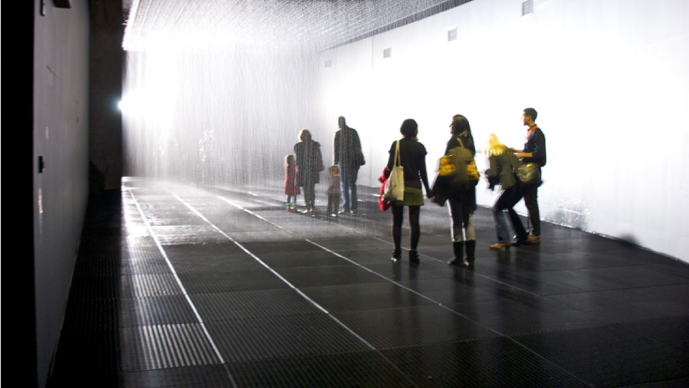
Figure 1. Random International’s “Rain Room”
To help clarify some of the above-mentioned points is a brief look at Rain Room. It is a provocative example of an everted or hybrid space-time that epitomizes some of what is possible in the new era. And while it is characterized as art by its creators, it could just as well be called a rhetorical work because of the ways in which it moves its participants toward new relations of self and world.
On Random International’s website, “Rain Room” is described as follows:
Rain Room is a hundred square metre field of falling water through which it is possible to walk . . . without being drenched in the process. As you progress through [the space] the sound of water and a suggestion of moisture fill the air, before you are confronted by this carefully choreographed downpour that responds to your movements and presence.
In videos on Vimeo and Random International's website, the fascination and joy that participants experience is irrepressible—including Oliver Wainwright’s. Wainwright is The Guardian's Architecture and Design critic.
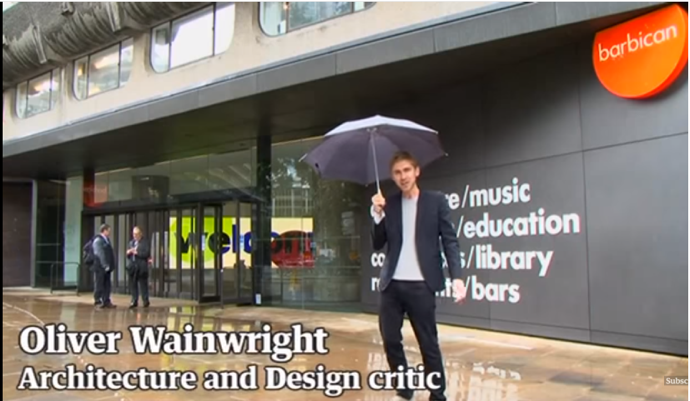
Figure 2. Oliver Wainwright’s interview with “Rain Room” artists
https://www.youtube.com/watch?v=EkvazIZx-F0
During a recorded walkthrough of “Rain Room,” Wainwright describes his experience as follows:
It's kinda surreal. Not only is it raining indoors, but I'm not even getting the slightest bit wet where I go. It's almost as if I'm giving off some wind that's pushing the rain away like I'm a human Rowan. It somehow responds to me like I'm a magnetic field. Wherever I go, it opens up around me. (Wainwright n. pag.)
After his walkthrough, Wainwright asked the two artists who designed “Rain Room,” Florian Ortkrass and Jeremy Wood, how it worked. “How do I not get wet walking straight through the middle?" Wood explained, "The piece is tracked using 3D depth cameras. . . . Essentially, as you walk in, you become a shape and a body. And then it turns individual valves on and off that we have above the piece" (n. pag.).
The way in which Wood describes “Rain Room” coincides with what Dan O’Sullivan and Tom Igoe would call a transductive process. It is the basis for Wainwright’s “surreal,” everted experience. In their book titled Physical Computing: Sensing and Controlling the Physical World with Computers, O’Sullivan and Igoe offer the following definition of the transductive process as well as the strategic (or rhetorical) end to which it is related:
The process of transduction, or the conversion of one form of energy into another, is what enables this flow. Your job is to find, and learn to use, transducers to convert between physical energy appropriate for your project and the electrical energy used by the computer. (O’Sullivan and Igoe, XIX-XX)
In a physical computing project, the software that a rhetor writes is the basis for transductions of energy to and from the analog and the digital. Those software programs transduce the analog flow of energy to and from the digital realm in order to create a conversation between the physical and virtual. When Gibson writes about the eversion of cyberspace, and about the colonization of the physical, he is implicitly writing about the impact of transductive processes. When the virtual and the real are folded together in some novel way, a moment of transduction has occurred. Eversion is the expression of a transductive process.
Another way of understanding the transductive process that leads to eversion is through Anna Muster’s description of the “extensive vector” that emerges from the mismatch between our bodies and code. In the following excerpt from Materializing New Media, Munster describes a computational dynamic described in this section:
Computers offer us multiplications and extensions of our bodily actions ….These multiplications by no means provide seamless matches between body and code; the mismatch characteristics of divergent series triggers the extension of our corporeality out toward our informatic counterparts….It is this extensive vector that draws embodiment away from its historical capture within a notion that the body is a bounded interiority. (33).
When analog data associated with a body’s participation in a computational environment is multiplied and extended by software (code), that “extensive vector” of transduction can be fed back into the space everting it and bodies associated with it.
With the notions of transduction and eversion in mind, the inventional goal is to generate a novel enfolding of the virtual into the real. That everting fold can transform a user’s sense of self. To understand the power of “Rain Room,” I’ll begin with what I would call the inescapable experience of my body’s “hereness.” When I am caught in a rainstorm, the assumed gap between self and world collapses and the “hereness” of my body conspicuous. As I get wet, I may even lose my sense of perspective, my mindfulness, as I rush for some kind of shelter. “Rain Room” reinstates the gap or distance that I take for granted. As I see it, the joy and wonder that participants describe after walking through “Rain Room” is due to the sense of mindfulness and perspective that is preserved. The transductive process that the artist-rhetors have enfolded into the real is an everted experience. Defying conventional expectations, “Rain Room” retains the gap between self and world, mind and body while its participants walk through the rain.
Suasive Iterations and the Digital Rhetor
Inspired in part by “Rain Room,” one of the chapters in my forthcoming book Suasive Iterations: Rhetoric, Writing, and Physical Computing explores the transductive and rhetorical possibilities of the depth data streaming from Microsoft’s Kinect sensor.1 Microsoft’s sensor is popularly known as a peripheral for XBOX 360 for “hands-free” gaming. A key data point in the Kinect’s support of hands-free game development is its sophisticated depth-sensing system. Microsoft’s use for the depth data is to help identify players’ movements and gestures, but the data streaming from Microsoft’s sensor, like the sensors used in “Rain Room,” can be transduced toward any number of everted ends.
In order to identify the available means of transduction and eversion, a digital rhetor should have a basic, technical understanding of the data stream with which she plans to work. Once she has that technical understanding, she can begin to explore the transductive potentials in the data stream. In the following example, the SimpleOpenNI library associated with the Processing programming language is the basis for my explanation.2
From a technical standpoint, the depth data is structured as an array of 307,200 floating-point values (0 – 307,199). The reason the array is 307,200 values in length is that it represents a 640x480 two-dimensional description of the scene in front of it. Each sub-set of 640 values comprises a row; so, values 0 – 639 are the first, top row, values 640 – 1279 are the next row below it, and the very last row of values are 306,559 – 307,199. You can think of it as a long line of numbers, one after the next. Thirty times each second, the Kinect sends out a new array of numbers, which means that it sends over 9 million values each second, a half-trillion values each minute. The amount of data with which a rhetor can experiment is considerable. Figure 3 below is an illustration of the relationship between the two data structures.
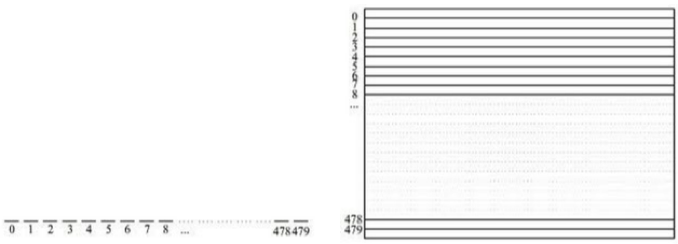
Figure 3. Illustration comparing structure of 1-D and 2-D depth data
The single-dimensional line of numbers can be reconstituted as a two-dimensional image relatively easily. Figure 4 is a reconstituted, two-dimensional image of the scene in front of the Kinect. Since the depth data is not a visualization, each floating point value has to be transduced visually. In Figure 4, the visual transduction is based on the 256 shades of gray available in the Processing language. The smaller the depth value, i.e., the closer something is to the sensor, the lighter the shade of gray.
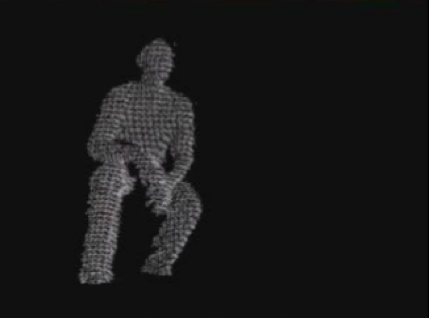
Figure 4. Conventional recreations of Kinect’s depth data stream
The ability to reconstitute the line of numerical values as a two-dimensional image is a useful first step for a digital rhetor—we can value it as the equivalent of a “Hello World” program—but the transductive process of invention really begins when a rhetor moves beyond this kind of conventional representation of space.3 To facilitate that end, I recommend developing a software program that I call a Visualization Dashboard (see Figure 5 below). A Visualization Dashboard is a software program that foregrounds one or more transductions of the data streams with which a rhetor is working, which makes it easier to conceptualize the inventional potentials for eversion. The Dashboard serves the rheteorical process of invention; so, it is not designed for an end user. The Dashboards are meant to help a rhetor (and the team with whom she is collaborating) identify and explore the transductive potential of one or more an analog data streams. This kind of transductive experimentation is an essential step in the direction of eversion -- and in the era of physical computing, software visualizations of transductive possibilities foreground its suasive potential.
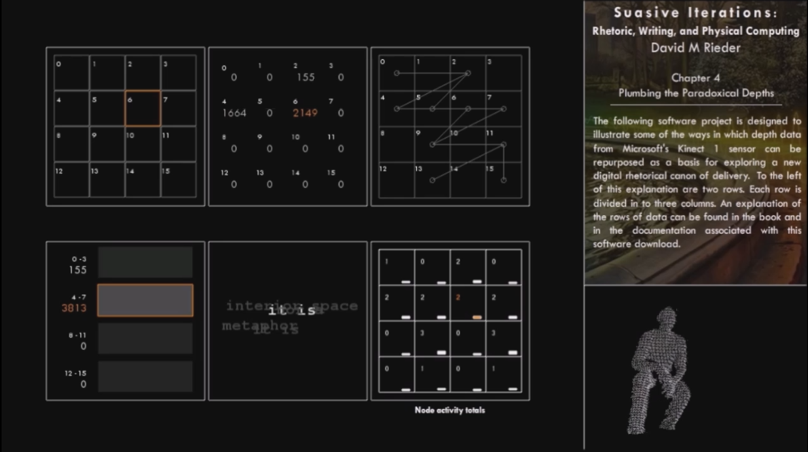
Figure 5. Visualization Dashboard for transductive experimentation
Link to: https://www.youtube.com/watch?v=pt0_4x2DbO0
The video above (Figure 5) is a recording of the software program that I wrote for the chapter on the Kinect depth data. The video includes three data recordings: 1) an individual’s movements in front of the sensor, 2) a group of people walking past the sensor, and 3) car traffic.4 The point behind the recording of car traffic is underscore the fact that the depth data can be used transduce the analog data associated with most any subject. Turning to the interface, the bottom right corner is the conventional representation of the space in front of the sensor. Like a corner stone, it is a comparative, referential baseline for more creative explorations of the data stream.
Turning the Dashboard, as I thought about how I might explore the everting potentials of the data streaming from the Kinect, the first transduction that I performed was to divide the three-dimensional data space in front of the Kinect into a 4x4x4 rectangular cuboid.
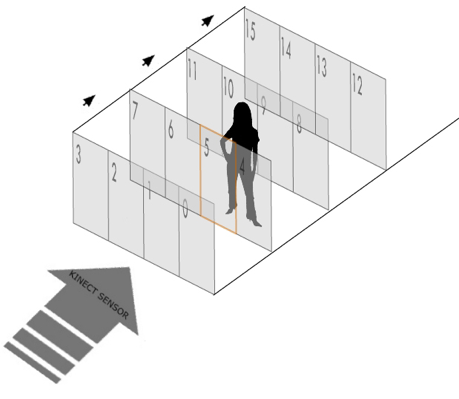
Figure 6. Illustration of the trandsduced, 4x4x4 space
This initial transduction offered me a grid of possibilities for comparing and combining activity among the sixteen locations. In a way, “Rain Room” does something similar. The water valves above the space are arranged in a two-dimensional grid; so, the depth data is divided in accordance with it. Figure 6 is an illustration of the division. The 2x3 grid of visualizations in the dashboard are all based on that initial transduction of the space.

Figure 7. Screenshot of visualizations labeled A - F
Moving on to the dashboard (see Figure 7), visualizations (viz) A and B depict which area in the 4x4x4 cuboid is most active at any given moment. Viz B offers a real-time tally of the number of pixels activated by someone or something in each area. The area with the highest numerical value is colorized orange. In viz A, the edges of the same space (6) are highlighted orange. Viz F adds to the functionality of viz A a history of how many times each area was the most active. The transductive roles played by A, B, and F, of identifying and recording which areas in the cuboid are most active, is related to viz C. As I wrote code in Processing that could identify which area in the cuboid is most active at any given moment, I realized that I could pursue a hypertextualized transduction of the data. In other words, each of the sixteen areas in the cuboid could be conceptualized as akin to a hypertext link. The circles and lines in viz C represent the network of relations that one or more human or non-human actors had engaged with the hypertexual cuboid. As a heuristic for further invention, viz C offers a rhetor and her collabortors a way of talking about the transductive possibilities for everting the experience in the event space. As one or more participants or non-human actors activated areas within the cuboid, different sounds, text, and images could be activated in a multimedia event space. The presence and changing position of one or more participants in the event space in front of the sensor would trigger an algorithmic response associated with a hypertextual space comprising sixteen active links. A complex algorithm could be developed to define the everting, hypertextualized experience in the event space that took into account the order in which areas were activated and the number of times they had been engaged.
Viz D is a somewhat simplified version of Viz A; rather than dividing the space in front of the Kinect into sixteen areas, it divided it into a 4x1 space. Viz E is meant to demonstrate how data associated with the activit within the 4x4x4 cuboid can be remapped to simple multimedia changes. As the center of activity in front of the Kinect changes, the text in viz E rotates along one or more axes.
Realizing that it is possible to create an interactive event space based on a hypertextualization of the depth data (the 4x4x4 cuboid) was made possible by visualizations of the data stream in the visualizations labeled A, B, and F. For the digital rhetor, innovation in the post-PC era of physical computing is predicated on the ability to create everted experiences within event spaces by transductively folding together the virtual and the real in novel ways. The third wayve forward is based on the ability learn how to combine the ~s with the /s, i.e., the analog with the digital. And by developing visualization dashboards, we can let the analog flows of energy with which we are experimenting tell us about its potentials for change.
As a final note, transductive rhetorics of eversion can be a provocative method of socio-political engagement in the post-PC era. Casuistically stretching the lesson behind the James-Lange theory of emotion in which the physiological response precedes the psychological, this new approach to digital rhetoric can be characterized as a way of building a better bear trap. The James-Lange theory turns on its head the notion that our emotions precede our engagements with world. According to the two theorists, our emotional responses are an interpretive response to physiological change. In other words, we don’t run away from a bear in the woods because we are scared; rather, we are scared because we are running away from it.5
My point is that when we as rhetors are successful in creating a critically-engaging eversion, we change the structural relations with the world, the objects within it, and even with each other. Those changes can then lead to new thoughts and emotions. I am not saying that fear must be the basis for socio-political change; rather, the famous example of the bear associated with the James-Lange theory of emotions implies a more general lesson about our perceived experience of change in our embodied relations with the world. In fact, mashing together James-Lange’s theory of the emotions with Richard Lanham’s theory of attention, the bear is a figure for what Lanham calls attention-getting traps. An attention-getting trap is, like the bear, an opportunity to change the way someone relates to self and world. For critically-engaged rhetors working in digital media, eversion is a new wayve for building better attention-getting (bear) traps.
Notes
1 My presentation at IDRS 2015 was based largely on excerpts from my forthcoming book with Parlor Press titled Suasive Iterations: Rhetoric, Writing, and Physical Computing.
2 Processing is an open-source language designed explicitly for the visual arts. The SimpleOpenNI library works with Processing. Information about the language and the library can be found at http://www.processing.org.
3 A “Hello World” program is one of the first programs that a programmer will write to understand the structure and I/O of a new language.
4 I want to thank the following CRDM students for participating in the recording of video of passerby: Kendra Andrews, Charles Ecenbarger, Mark T. Bentley, Desiree Dighton, and Justin Grandinetti.
5 William James essay, “The Physical Basis of Emotion,” elaborates on the ursine argument.
Gibson, William. “Google’s Earth.” The New York Times. 31 August 2010. 1 August 2013.
James, William. “The Physical Basis of Emotion.” Psychological Review vol. 101, no. 2 (1994): 205-210.
Jones, Stephen E. The Emergence of Digital Humanities. New York: Routledge, 2013.
Lanham, Richard. The Economics of Attention: style and Substance in the Age of Information. Chicago: University of Chicago, 2007.
Sullivan, Dan and Tom Igoe.Physical Computing: Sensing and Controlling the Physical World with Computers. New York, NY: Cengage Learning, 2004.
Munster, Anna. Materializing New Media: Embodiment in Information Aesthetics. Hanover, NH: Dartmouth College P, 2006.
“Rain Room.” rAndom International. 2012. 1 August 2013.
Rosen, Stanley. Plato's Sophist. New Haven: Yale UP, 1983.
Vitanza, Victor J. “Abandoned to Writing: Notes Toward Several Provocations.” Enculturation: A Journal of Rhetoric, Writing, and Culture. Vol. 5, no.1 (2003): n. pag. 1 August 2013.
Wainwright, Oliver. “Barbican’s Rain Room: It’s Raining, But You Won’t Get Wet.” Guardian. 3 October 2012. 1 August 2013.